John Hurrell – 21 September, 2010
The darker spontaneous works with central clusters of black ground chunks and flying specks, shards and splinters were made partially by placing pieces of willow charcoal in a press with sheets of gessoed paper and applying pressure. The lighter, more evenly composed linear works involve the undercoated gesso being raked with metal combs so that the resulting vertical striations collect charcoal dust. These pond-like images, with their strange tilted circles, apparently are of the Kaituna Lagoon that is close to Taylor's home.
Exhibitions of charcoal drawings are a rare event these days, especially as courses in life drawing (or any drawing) appear to have totally evaporated at universities. It seems photography and its digital off-shoots is regarded now by many tertiary institutions as a suitable surrogate for a thinking aid. This show helps point out that more diversity in conceptualisation methods is possible.
Bronwyn Taylor’s sixteen landscape drawings - black charcoal and white gesso together, the former made from willow trees on her own property (just southwest of Banks Peninsula) - are mostly of two types: frenetic Dionysian images of what appears to be an explosion shredding the air within a landscape; and sedate Apollonian schemata, cool in their classical and diagrammatic repose, of what seem to be large circular water lilies in a shimmering reflective pond. (They also could be oxidation ponds in a wastewater plant - and motivated by satire.) One is convulsively energetic (embracing chaos), the other elegantly poised in its precise placements (espousing order).
The darker spontaneous works with central clusters of black ground chunks and flying specks, shards and splinters were made partially by placing pieces of willow charcoal in a press with sheets of gessoed paper and applying pressure. The lighter, more evenly composed linear works involve the undercoated gesso being raked with metal combs so that the resulting vertical striations collect charcoal dust. These pond-like images, with their strange tilted circles, apparently are of the Kaituna Lagoon that is close to Taylor’s home.
Taylor is known for her bronze casting, but the Lagoon works seem more like an installation artist’s drawings with their methodical exploration of perspectival space. The crushed charcoal drawings though show a different sort of mark, one more intricate, shattered and process oriented, and akin to those a printmaker might make creating etchings with washes of diluted acid on a plate. They also have a hint of the greasy daubs of the great Australian painter Fred Williams. The other images mingle blurred and scratched charcoal strokes with banks of small circles made with round (in cross-section) twigs, mostly black but some white - dipped in gesso.
It’s fascinating to see a body of this sort of ‘old fashioned’ work in Auckland, to witness pleasure in mark making and delight in thinking about space and light, as contained by landforms, clouds or water. These are images made for their own sake - not in preparation for something else. Unexpectedly unusual and exciting.
John Hurrell
Recent Comments
John Hurrell
Shall we say 'very dark grey'? I agree absolutely with your comments, Matt. You have to see them directly.
Matt Akehurst
John no disrespect to your photos, but this show needs to be seen in the flesh, for everything that these ...
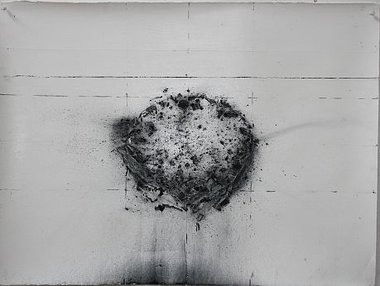
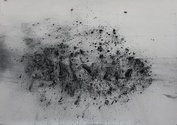
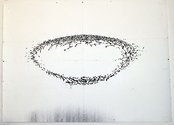
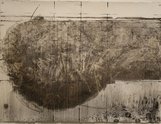
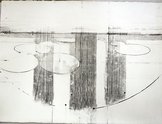
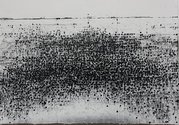
 Advertising in this column
Advertising in this column Two Rooms presents a program of residencies and projects
Two Rooms presents a program of residencies and projects



This Discussion has 2 comments.
Comment
Matt Akehurst, 8:02 a.m. 22 September, 2010 #
John no disrespect to your photos, but this show needs to be seen in the flesh, for everything that these photos have left out and text cannot explain. Charcoal the new Black?
John Hurrell, 8:48 a.m. 22 September, 2010 #
Shall we say 'very dark grey'? I agree absolutely with your comments, Matt. You have to see them directly.
Participate
Register to Participate.
Sign in
Sign in to an existing account.